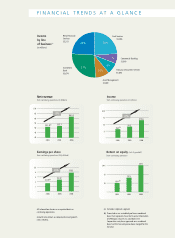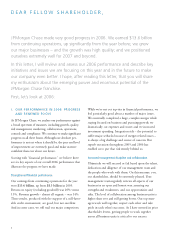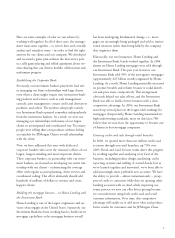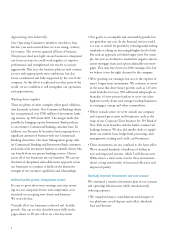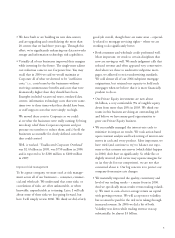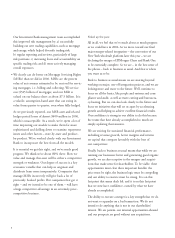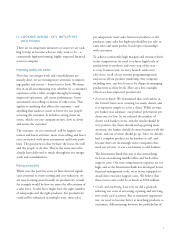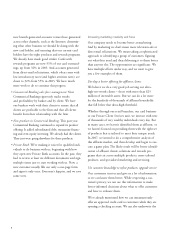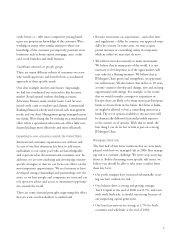JP Morgan Chase 2006 Annual Report Download - page 13
Download and view the complete annual report
Please find page 13 of the 2006 JP Morgan Chase annual report below. You can navigate through the pages in the report by either clicking on the pages listed below, or by using the keyword search tool below to find specific information within the annual report.11
THE BAD
• Default rates were still higher than we had predicted.
• In hindsight, when underwriting subprime, we could
have been even more conservative and less sensitive to
market and competitor practices. We’ve now materially
tightened certain underwriting standards on subprime
mortgages.
• We don’t expect that losses on our subprime loans
would go up by more than about $150 million – not
so bad, but we prefer it weren’t so.
POSSIBLY THE UGLY
We do not yet know the ultimate impact of recent indus-
try excesses and mismanagement in the subprime market.
Bad underwriting practices probably extended into many
mortgage categories. As government officials investigate
the market and losses mount, the industry is tightening
underwriting standards by reducing loan-to-value ratios
and using more conservative property values. There will
be more due diligence on incomes and credit quality.
More rigid standards increase foreclosures and make it
more difficult to buy homes. This will lead to a lower
number of sales and a reduction in home values.
The good news is this is happening in a healthy job envi-
ronment, which is still the most important determinant of
good consumer credit. The subprime business is a great
example of what happens when something good (the abil-
ity to help a lot more people buy homes) is taken to
excess. Even so, we still believe that subprime mortgages
could be a very good business, and that when it all sorts
out, we will be well-positioned.
Enhancing our corporate social responsibility standards
Last year we wrote to you about how our company is a
caring and generous institution. We try to help all of the
communities in which we operate. We do this in multi-
ple ways, ranging from charitable giving and diversity
initiatives to the promotion of economic opportunity
and development. This year, we are working to make
these efforts more meaningful and to become more
socially responsible in a variety of ways, including several
described below:
We strive to be fair and ethical in our business practices
• A strong set of principles guides our actions and
informs our decisions. We demand that our executives
behave in accordance with these principles.
• We are dedicated to high-quality, responsibly marketed
products and services.
• We continually innovate and work to improve the
quality of life for our clients and communities.
We are helping to protect the environment
Last year, we took a number of important steps in this
critical area:
• We raised $1.5 billion of equity for the wind power
market, with approximately $650 million allocated to
our own portfolio. Since its inception in 2003, our
renewable energy portfolio has invested in 26 wind
farms, now totaling approximately $1 billion.
• We published a series of corporate research reports
concerning business and environmental linkages,
including legal and regulatory risks related to climate
change, and issues and opportunities in biofuels and
the ethanol market.
• We trained more than 100 bankers globally to better
implement our environmental and social risk policy.
• We completed our U.S. greenhouse gas emissions
baseline, increased our investments in energy-efficient
projects, and purchased renewable energy credits
(green energy).
• We began building several green bank branches and
are seeking Leadership in Energy and Environmental
Design certification for the renovation of our world
headquarters.


